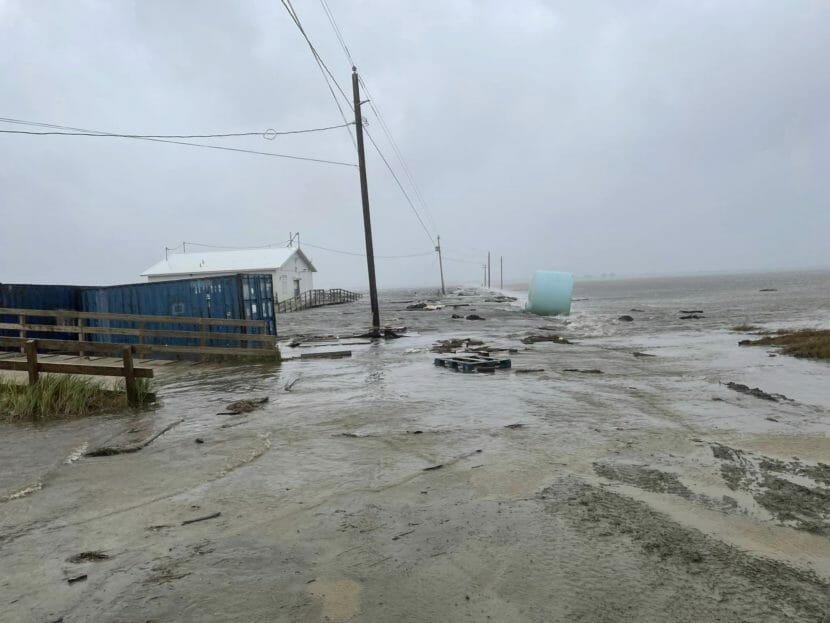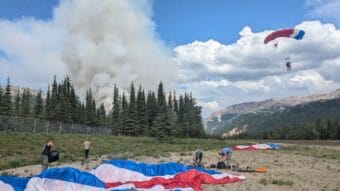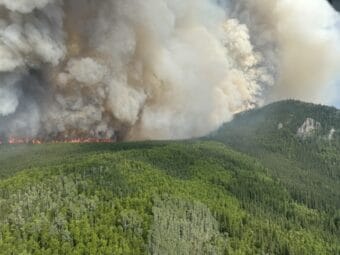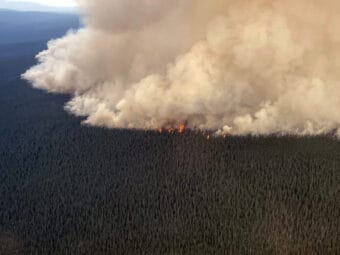
The Alaska National Guard is activating all guard members in the western region of the state and is deploying more to the area.
Maj. Gen. Torrence Saxe said at a Sept. 18 press conference that troops would help with debris removal and damage assessment, with additional guard members going to Hooper Bay, Nome and Bethel.
“It is critical to have boots on the ground,” Saxe said.
Saxe said that having troops in hub communities will allow them to deploy to smaller villages more quickly.
The American Red Cross is also sending out volunteers. The state has identified five communities that have been impacted the most by the storm: Hooper Bay, Scammon Bay, Golovin, Newtok and Nome.
As of Sept. 18, three communities had a boil water advisory in effect: Elim, Unalakleet and Hooper Bay. Multiple communities, including Hooper Bay, had lost power at their airports.
Gov. Mike Dunleavy said at the press conference that he hopes the recovery response moves quickly and efforts wrap up before freeze-up begins in about three weeks.
“Wherever there is help that is needed, we’ll be getting that out there as soon as possible,” Dunleavy said.
Dunleavy issued a disaster declaration on Sept. 17 to free up state resources.
The damage from the storm ranges across a thousand miles of Western Alaska, from Kuskokwim Bay all the way up through the Bering Strait. University of Alaska Fairbanks climate expert Rick Thoman said that the widespread, severe damage due to this storm is part of what made it unusual. So is the timing. It’s the strongest September storm since records began over 70 years ago.
“We had the absolute perfect set up for a big Bering Sea storm,” Thoman said.
Thoman said that Typhoon Merbok, the source of Alaska’s storm, formed in a part of the North Pacific where typhoons don’t usually form because the water usually isn’t warm enough. But the water there was the warmest it had been in the last century.
“And after it developed and started moving north, then it moved over water that was as much as 7 degrees warmer than the long term normal,” he said. “That is a dramatic difference from normal. For the open ocean, that is really amazing.”
Thoman said that as climate change continues to cause sea water temperatures to warm, storms like this one could become more common in Alaska.
In Hooper Bay, a resident named Ben called in to KYUK on Sept. 17 to describe the scene in the village. Hundreds of people were sheltering at the school due to severe damage and power outages.
“Now, this is a wake up call. We don’t know what our future, but we can’t be ignorant or ignore it also. So we need to face the facts and reality. These storms are getting worse and worse,” he said.
Also taking stock of the damage as the storm blows over is Rep. Mary Peltola, who is from the Yukon-Kuskokwim Delta, home to some of the hardest-hit communities.
Peltola, who was briefed by Federal Emergency Management Agency officials on Saturday, has been in touch with Dunleavy and a number of mayors in affected communities. She’s worried about damage to subsistence harvests amid the flooding and power outages, as well as damage to infrastructure and equipment.
“Those are the kind of assessments that I’m going to be waiting patiently to — or not so patiently, actually — to start hearing back on,” Peltola said.
Peltola said that she and Alaska Sens. Lisa Murkowski and Dan Sullivan will be working on securing federal disaster funding.



